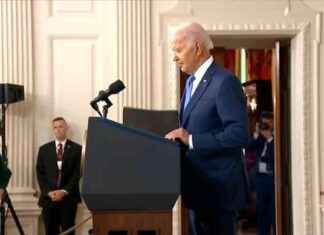SPOKANE (Wash.) — The costs to remove a large nuclear weapons complex in Washington state can often be in the hundreds of millions of dollars. It also requires decades of work.
One project, however, on the Hanford Nuclear Reservation, is moving at a lower cost.
The federal government is moving ahead with the “cocooning” of eight plutonium-producing reactors at Hanford. This will allow them to be in a long-term storage state to allow radiation to dissipate over many decades before they can be removed and buried.
Cocooning is relatively inexpensive, Mark French, a U.S. Department of Energy manager, stated. “It would be very expensive to try to demolish the reactor core and dismantle it. It would also put workers at great risk.
To produce plutonium during World War II, the federal government built nine nuclear reactors in Hanford. This site is located along the Columbia River and contains America’s most radioactive waste.
Now, the reactors have been shut down and are sitting like fortresses of cement near Richland in southeastern Washington. Six of the reactors have been placed in a cocoon for long-term storage and two more are on their way. As part of the Manhattan Project National Historical Park, the ninth reactor was made into a museum.
The Cold War ended in 1989 and World War II ended in 1945, but the United States still pays billions of dollars each year to dispose of nuclear waste from the atomic weapons used in those conflicts. The largest expense is the disposal of large quantities of liquid wastes from plutonium production, which is a key ingredient of nuclear weapons.
Although cleaning the liquid wastes in the 177 underground tanks will require decades of effort and hundreds of billions of dollar, the efforts to secure the nine plutonium nuclear reactors are closer to completion.
French stated that the last two reactors, which were shut down in 1970, 1971 and 1971 respectively, are now entering the cocooning stage. This is when steel and cement are applied to the reactors to stop radioactivity from reaching the environment.
French stated that the cocoons will last approximately 75 years. By then, the radioactivity will have drastically decreased and there will likely be a plan to dispose of any remaining parts.
He said that workers visit the reactor building every five years to check for any bird or rodent infestations.
Hanford has approximately 11,000 employees. It is half the size Rhode Island’s. Cleanup began in the 1980s and now costs $2.5 billion annually. The slow pace of the work was caused by technical problems, lack of funds, lawsuits from state regulators and worker exposure to radiation. Contractors also had to be replaced.
However, the way the older reactors are handled is a shining spot.
From 1943 to 1965, the nine reactors were constructed. They are called B Reactors, C Reactors, D Reactors, DR Reactors, F Reactors, F Reactors, DR Reactors, DR Reactors, DR Reactors, DR Reactors, DR Reactors, DR Reactors, DR Reactors, DR Reactors, DR Reactor and K-West Reactors Reactors, K-West Reactors, K-East Reactors, K-West Reactors, K-West Reactors, K-West Reactors, K-West Reactors, K-West Reactors, K-West Reactors, K-West Reactors, K-West Reactor and N Reactors.
Because of the abundant hydropower and cooling water required by the reactors during operation, they were built next to Columbia River.
K-East, K-West and all other reactors have been cocooned. French stated that cocooning of the K-East reactor is underway and should be completed by 2023. The K-West reactor’s construction is expected to be completed by 2026.
K-East’s and K-West’s cocoon plans are to build steel buildings around them. French stated that each building measures 158 feet (48.2 metres) in length, 151 feet (46.6 meters) wide, and 123 feet (37.5m) high. Each of the two steel buildings will be less than $10,000,000.
French stated that future generations will decide what to do with the eight reactors. They will be dismantled at Hanford and buried there, far from the river.
French stated that robots could be used in the future for this work.
Hanford watchdogs are generally in agreement with this process, according to Tom Carpenter, director at Hanford Challenge, a Seattle-based watchdog group.
Carpenter stated that no one is raising concerns about cocooning. “We are all concerned about the tank waste, which needs immediate attention.”
He said that the bigger question is whether future generations are willing to cover the huge cleanup costs at Hanford.
Carpenter stated that the cost of completely cleaning up the Hanford site’s tank wastes is approximately $660 billion.
It’s quite grim. He said that it was multigenerational.
Carpenter stated that tank wastes and other wastes were going to cost more than people thought. It’s an invisible cost of (nuclear buildup).
Carpenter stated that by then there could be larger budget concerns, such as the cost of dealing with climate change effects.
The B Reactor is the most interesting of all the reactors. It was the first to be built in World War II. Tourists can visit it at the national historic park. It won’t be enclosed. The B Reactor, which was shut down in 1968 by the US Army, has been restored to a condition that allows approximately 10,000 tourists each year to see it and learn about Hanford’s history. It was designated a National Historic Landmark.
In July 1945, the first atomic bomb was tested using Plutonium from Hanford’s B Reactor. The Trinity Test was the name of the bomb that was destroyed in the New Mexico desert. Hanford plutonium was also used in the bomb that was dropped on Nagasaki (Japan) on Aug. 9, 1945.








